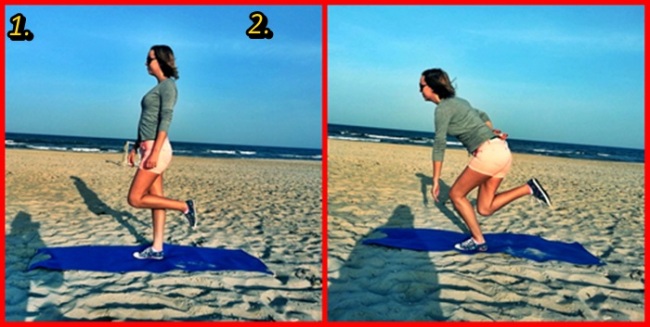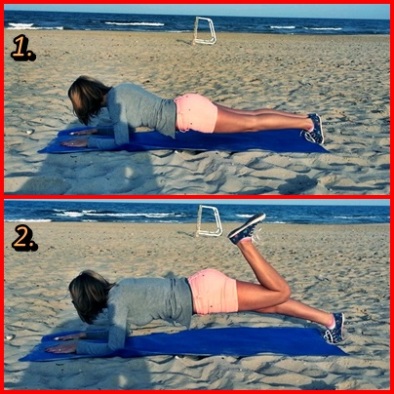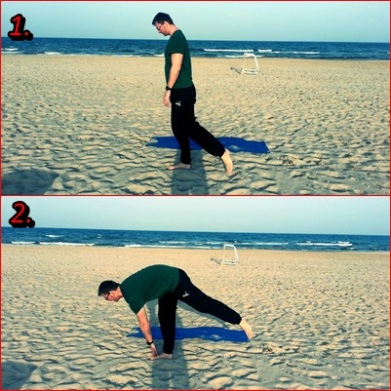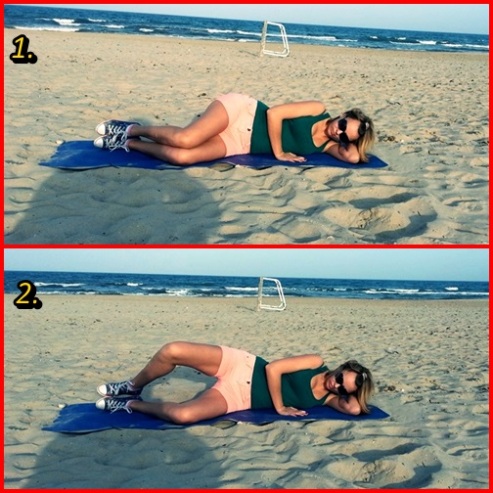To understand how stretching can improve or aggravate disc problems, let’s look at how a disc works and how it gets damaged. Intervertebral discs function as shock absorbers, cushioning the brain from jarring as we walk, run, and jump. Each disc consists of two parts: the inner disc, the nucleus pulposus, made of a shock-absorbing gel-like substance, and the annulus fibrosis, the rings of ligament that surround and support the center.
A normal lumbar spine has a mild curve forward, and in this position, weight is evenly distributed throughout each disc. During toe-touching, the lower back flexes, losing its normal curve, and more weight is put on the front of the discs. The gel-like centers get pushed backward, into the now stretching support ligaments. While this can happen during forward bending even if a person tends to have excessive lumbar curve (“swayback”), it is especially problematic if the spine has lost the normal curve and become flattened.
With repetition, or if great force is applied as in heavy lifting, the ligaments weaken and may “bulge” like a bubble in the wall of a tire. Or the ligaments may tear, allowing the gel-like inner disc to leak out, resulting in a herniated disc. The bulging or herniated disc may cause lower back pain or, if it is pressing on an adjacent nerve, pain can be referred into the hip and leg. Bulging and herniated discs may be treated conservatively, with physical therapy, exercise, and other noninvasive treatments, but a badly herniated disc is a serious medical problem which may require surgery and a lengthy recovery period.
While heavy lifting is a well-known cause of back injuries, disc damage is just as frequently caused by the smaller but repetitious forward-bending movements we make during daily activities at work and at home. For most of us, half of our body weight is above the waist. Just as a child “weighs more” as he or she slides away from the center to sit at the end of a teeter-totter, our own upper body weight exerts greater force at the disc as we bend farther forward. This tremendous force on the disc, added to the strain on the supporting ligaments, sets the stage for damage.
In our society, opportunities abound for repetitive forward bending: child care, yardwork, housework, shopping. Even sedentary work may exert strain on the lower back; for example, someone bending and twisting from a sitting position to lift a heavy object out of a bottom desk drawer. The greater the weight being lifted (and the weight of one’s own body), the greater the pressure on the disc.
Forward bending activities, especially combined with lifting, are also the most common cause of back “strain.” While much less serious than disc injuries, back strain is responsible for most of our lower back pain, including the Monday morning ache after weekend gardening.
Lower Back Pain Relief Yoga Sequence
1. Supine Hamstring Stretch

Lying on your back, bend your right knee into your chest and place a strap or rolled-up towel around the ball of your foot. Straighten your leg toward the ceiling. Press out through both heels. If the lower back feels strained, bend the left knee and place the foot on the ground.Hold for 3-5 minutes and then switch to the left let for 3-5 minutes.
2. Two-Knee Twist

Lying on your back, bend your knees into your chest and bring your arms out at a T. As you exhale lower your knees to ground on the right. Keep both shoulders pressing down firmly. If the left shoulder lifts, lower your knees further away from the right arm. Hold for 1-2 minutes each side.
3. Sphinx

Lying on your stomach, prop yourself up on your forearms. Align your elbows directly under your shoulders. Press firmly through your palms and the tops of your feet. Press your pubic bone forward. You will feel sensations in your lower back, but breathe through it. You are allowing blood flow into the lower back for healing.Hold for 1-3 minutes.
4A. Pigeon

From all-fours, bring your right knee behind your right wrist with your lower leg at a diagonal toward your left hip. Square off your hips toward the ground. Bend forward. Widen the elbows and place one hand on top of the other as a pillow for your forehead. Hold 2-3 minutes and then switch to the left side for 2-3 minutes.
If pigeon pose bothers your knees, then do Thread the Needle.
4B. Thread the Needle

Lying on your back, bend both knees with the feet flat on the ground. Bend the right knee like a figure four, with the outer left ankle to the right thigh. Lift the left foot into the air, bringing the left calf parallel to the ground. Thread your right hand between the opening of the legs and interlace your hands behind your left thigh. Hold 2-3 minutes and then repeat on the other side.
5. Legs Up the Wall

Scoot your buttocks all the way into the wall and swing your feet up the wall. This pose is excellent for relaxing the muscles of the lower back and drains stagnant fluid from the feet and ankles. Do this pose after a challenging workout and always after traveling by plane.Hold for 5-10 minutes.
Other YOGA POSES for LOWER BACK PAIN
1. “This sequence is very safe for people with lower-back issues and can help to alleviate pain when done regularly,” says Jean Koerner who has been teaching yoga for 20 years and is currently an instructor at ISHTA Yoga in New York City. ISHTA is a Sanskrit word for “personalized practice,” and this routine is customized for back-pain sufferers.

2. RECLINING TWIST ( a )
Next, inhale, draw your knees into your chest, and as you exhale, lower your knees to the right, keeping them at hip level.

3.RECLINING TWIST ( b )
Lie on your back with your knees bent, feet flat on the floor, hip-width apart and 4 to 6 inches away from your sit bones. Open the arms out to the sides, even with your shoulders, palms facing up. Then lift your hips and shift them over 4 inches to the left, setting yourself off center.

4.BRIDGE POSE
Lie on your back with your feet flat on floor, palms facing down. Lift your hips and torso off the floor, pressing into your palms and feet. Then interlace your hands under your hips and press your shoulders and upper arms into the floor, lifting your hips higher toward the ceiling. As your breastbone rises toward your chin, move your chin back a little away from your chest. Hold for six to eight breaths. Then lower yourself slowly rolling down from the top of your spine to your tailbone. Rest for four breaths before repeating.

5. Extended side angle pose
Stand with your feet about 4 feet apart and raise your arms out to your sides, shoulder height, with your palms facing down. Turn your left foot and leg out 90 degrees to the left and your right foot in about 15 to 30 degrees. Inhale, and as you exhale bend your left knee up to 90 degrees, keeping your knee stacked over your heel. Place the top of your left forearm on your left thigh and roll your chest open toward the ceiling. Raise your right hand straight up and turn your head to look at it. Hold for five breaths. Then carefully come out of the pose and repeat on the opposite side.

6.Warrior II pose
Stand with your feet about 4 feet apart and raise your arms out to the sides at shoulder height, palms facing down. Then turn your left foot and leg 90 degrees out to the left and your right foot in about 15 to 30 degrees. Inhale, and as you exhale bend your left knee up to 90 degrees, keeping your knee stacked over your heel. To further protect your knee, center it over the middle of your foot, so it’s pointing over your second and third toes. Then turn your face to the left and gaze out over your left hand. Hold for five breaths before straightening up and repeating on the opposite side.

7.MOUNTAIN POSE
From down dog, keep the hands planted on the floor, but walk the feet towards the hands. Hold for 5 breaths.
2. Then, start at the tailbone and move to standing by rolling up the back vertebrae by vertebrae. Keep the feet pressing into the floor and come to a standing position with feet hip-distance apart and pointing forward.

8.PLANK POSE
From down dog, lower your hips so your body is in a high pushup position with your hips connecting the straight line between your shoulders and ankles (i.e., not drooping toward the floor). Engage your abdominals and hold for five breaths. Then lift the hips back into down dog and hold for five breaths. Next move inhale into plank and exhale back to down dog, repeating five times to warm up your shoulders.

9.DOWNFACING-DOG POSITION
From all fours, curl your toes under. Inhale, and as you exhale, push your hands into the floor, lift your knees, and lift your hips back and up. Push the tops of your thighs back so your body looks like an inverted “V.” Keep knees bent if needed to keep your spine long and straight. Hold for 1 minute.

10.CAT-COW SEQUENCE ( B)
Exhale and point your toes. Round through your lower back, pressing your palms into the floor and tilt the top of your head down, releasing the tension from the upper back and neck. Repeat for six full breaths.

11.CAT- COW POSE ( A )
Begin on all fours with your hands under your shoulders and knees under your hips. Inhale and curl your toes under. Tilt your pelvis toward the ceiling, turning your sit bones up, draw the shoulder blades down the back, open through the chest and look a little forward keeping the neck curve long.

12.CORPSE POSE
Lie comfortably on your back on the floor with your arms separated at a 45-degree angle from your body, palms facing up. Let your legs rest as wide apart as feels comfortable. And allow your feet to relax and roll open. Then release all tension from every part of your body. Place a bolster or large cushion under your thighs or knees if you have any discomfort in your lower back in this pose. Stay here for 5 minutes (set an alarm clock if you need to).

Enjoy !
Photos courtesy of Shutterstock and Women´s Health ( http://www.womenshealthmag.com/ )








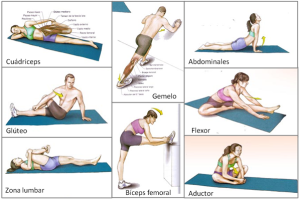










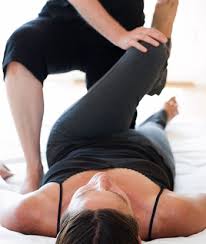


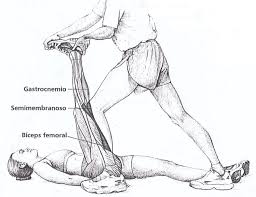
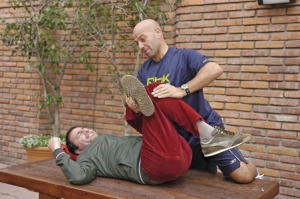
















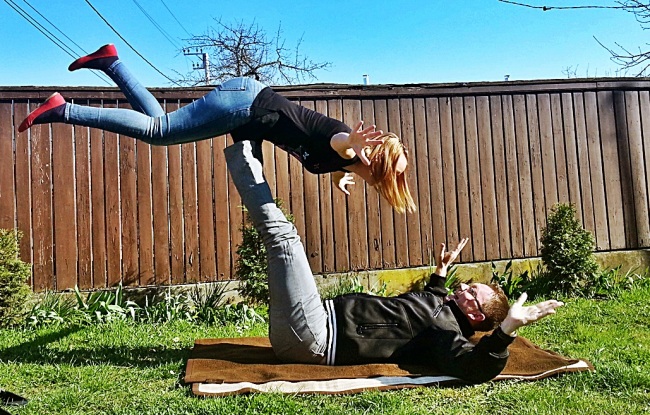







.jpg)



































